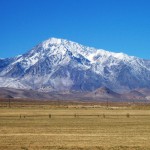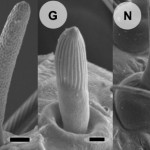 When I wake up in the morning, I stumble into my kitchen, plunge a spoon into a jar of solidified coconut oil and scoop it into my mouth. I soften the oil with my tongue and swish it around, pushing and pulling it between my teeth for exactly 20 minutes. After I spit the oil into the trash, I gargle with water, brush my teeth, and begin my day.
When I wake up in the morning, I stumble into my kitchen, plunge a spoon into a jar of solidified coconut oil and scoop it into my mouth. I soften the oil with my tongue and swish it around, pushing and pulling it between my teeth for exactly 20 minutes. After I spit the oil into the trash, I gargle with water, brush my teeth, and begin my day.
This may seem disgusting – and I agree. A congealed chunk of coconut oil is the last thing I want melting in my mouth at 6:45 a.m. But I began ‘oil pulling’ a few months ago after a routine six-month cleaning with Sonny, my dentist. After casually telling her that I get a dull ache between my back two upper left molars when I eat tough pieces of meat, like steak, Sonny’s happy dentist smile slumped into a frown.
She poked the puffy, red section of my gums with her metal spike and a lightning bolt of pain coursed through the left side of my face. My gums started to bleed. Then she said a series of words that I didn’t fully understand, but that I knew were bad: Gingivitis. Periodontal disease. Deep cleaning. Bacteria.
Okay, I knew what all of those words meant. But I never thought they’d associate with me. From the moment I wake up, to immediately before I flop back into bed at night, my teeth are brushed and flossed. Even when I’m lethargically drinking red wine and sucking dark chocolate squares while watching True Detective, I still drag myself to the bathroom to brush and floss before I surrender to the snooze gods.
But as my dentist explained, some people are genetically predisposed to gum disease. Something about the types of bacteria that live in our mouths. And if I didn’t start vigorously attacking this tiny section of my gums, I might have to endure a dreaded deep cleaning. Sonny convinced me to spend $10 on a travel-sized toothpaste containing prescription-strength fluoride and sent me on my way.
A few weeks later, I met a massage therapist in Santa Cruz and we started talking about coconut oil. She told me that she swishes the oil in her mouth once a day, upping it to three times a day when she feels like she’s getting a cold. The antimicrobial properties of the oil somehow tease the virus out of her system, she said. She even puts a dollop of oil in her morning coffee, which she claims thwarts caffeine jitters. But the icing on this conversation cake was when she told me that her dentist claimed that her gums looked healthier than ever.
I was skeptical, so I hopped online to research. Oil pulling is an Indian folk remedy that was first mentioned around 2,500 to 3,000 BC in Ayurveda, traditional medicine texts native to India. Oil pulling claimed to cure about 30 systemic illnesses ranging from headaches and migraines to diabetes and asthma. Orally, it purports to prevent tooth decay, bad breath, bleeding gums, dry throat, and cracked lips while strengthening teeth, gums and the jaw. Most practitioners use a tablespoon of sesame seed oil, but other oils, like coconut oil, are also touted for their antioxidant properties.
To my dismay, however, I found only a handful of scientific studies on the therapy. But I had an untapped jar of coconut oil begging to be swished. So I gave it a try.
 Vigorously swirling oil around my mouth for 20 minutes without stopping was tricky at first. I could only swish for five minutes on my first try. But over time, my mouth muscles became stronger and I learned to distract myself by doing dishes or cooking oatmeal. Now, I sometimes forget to stop after 20 minutes. Although I did sneeze while pulling one time and that was a mess. Try not to do that.
Vigorously swirling oil around my mouth for 20 minutes without stopping was tricky at first. I could only swish for five minutes on my first try. But over time, my mouth muscles became stronger and I learned to distract myself by doing dishes or cooking oatmeal. Now, I sometimes forget to stop after 20 minutes. Although I did sneeze while pulling one time and that was a mess. Try not to do that.
I called Alaka Hebbar, a researcher who came across oil pulling while doing her masters in oral medicine and radiology in India. After she graduated, she began a small, three-month-long clinical study that advised oil pulling with sesame oil to nine patients with oral precancerous conditions and lesions like leukoplakia, oral submucous fibrosis, and oral lichen planus. Hebbar instructed participants to quit tobacco use for the length of the study.
“All of them showed significant improvement. Burning sensations associated with the lesions were significantly reduced and there was a clinical regression in the extent of lesions. But how [oil pulling] works at the molecular level is not known yet,” said Hebbar.
Hebbar has not published her results, but others have. In 2009, Sharath Asokan at the Meenakshi Ammal Dental College in India split 20 adolescent boys with plaque-induced gingivitis into two groups. Every morning before brushing, one group swished sesame oil and the other swished mouthwash. After 10 days, both groups had reduced levels of plaque with no statistical difference between the two groups. Sesame oil was just as effective as mouthwash. Another study by Amith et al. in 2007 found that oil pulling with sunflower oil significantly reduced plaque scores in 10 people after 45 days.
While no one knows how it works, Hebbar believes that the thick consistency of the oil prevents bacteria from sticking to the teeth and deters plaque co-aggregation. The antioxidant property of sesame and coconut oils may also protect the mouth from infection and inflammation. While Hebbar says the technique is most commonly practiced in rural parts of India and China, she believes it will become more popular in the U.S. once researchers understand how it works molecularly.
David Biles, a dentist in Santa Cruz, highly recommends oil pulling to his patients. But for some who have moderate to severe periodontal disease, oil pulling can actually make them worse, his receptionist said. If a patient already has a lot of tartar buildup, or plaque that has hardened, oil pulling may quickly form a layer of healthy tissue and block the tartar.
Still, Hebbar and Biles both believe that oil pulling is an excellent, natural way to improve oral health with minimal side effects.
As for me, I haven’t had any gum pain since I started pulling, so it appears to be working. I can even eat steak without any throbbing. But I won’t know for sure until Sonny probes the area with her shiny dentist tools. Until then, I’ll be swishing and humming until I run out of oil. Or money. Whichever comes first.







Julia, thank you for your article. I quoted your post in a recent interview here: http://www.curejoy.com/content/kailas-on-the-new-celebrity-health-trend-in-hollywood-ayurvedic-oil-pulling/
Thanks for sharing this helpful post….!